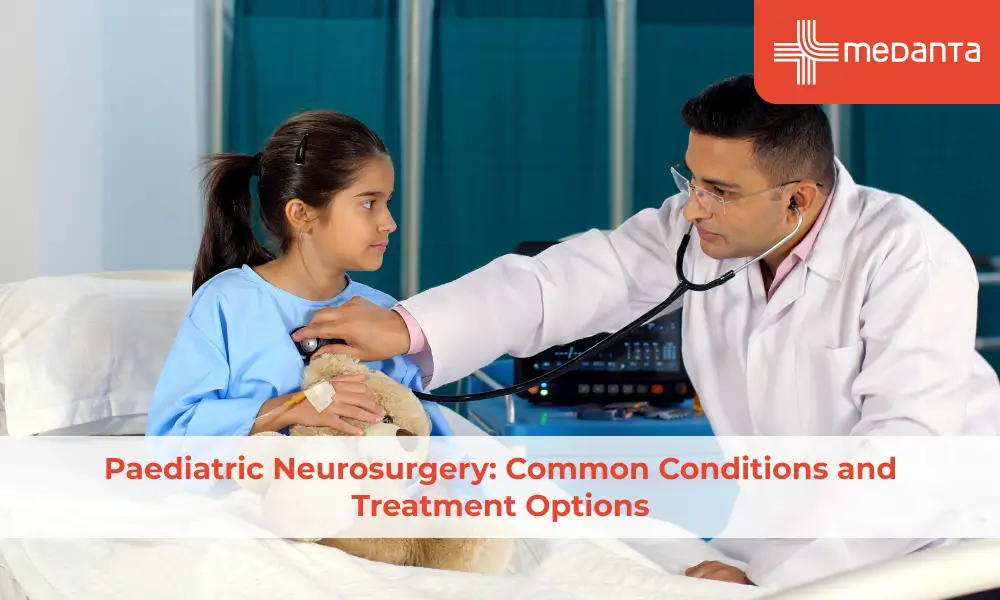Rhabdomyosarcoma's Devastating Impact on Young Lives!

As a rare pediatric malignancy originating from skeletal muscle cells and connective tissues. Rhabdomyosarcoma grows quickly and can spread widely if not identified and treated early.
"The early symptoms are often vague and missed, allowing the cancer time to take hold. But when caught early through awareness of telltale lumps or other signs, treatment can be most effective."
In this post, we will provide an overview of rhabdomyosarcoma's typical presentation, what caregivers and medical professionals need to watch out for, and the critical importance of seeking assistance from pediatric oncology specialists as soon as possible upon suspicion of this aggressive soft tissue cancer that can have life-altering consequences if not addressed promptly.
Understanding Rhabdomyosarcoma - What Is It?
Rhabdomyosarcoma, often abbreviated as RMS, is a type of cancer that primarily affects soft tissues. Soft tissues include muscles, tendons, nerves, fat, blood vessels, and more.
This cancer arises from cells that develop into skeletal muscles, hence the prefix "rhabdo," which means "rod-shaped" and refers to the appearance of muscle cells under a microscope.
Rhabdomyosarcoma Symptoms
One of the challenges with rhabdomyosarcoma is its stealthy onset. Rhabdomyosarcoma symptoms may vary depending on the location of the tumor and its size. However, some common signs and symptoms may include:
- Unusual Lumps or Swellings: Keep an eye out for any unusual rhabdomyosarcoma lump or swelling, especially in the head and neck area, urinary tract, extremities or reproductive organs.
- Pain or Discomfort: Persistent pain or discomfort in the affected area, which may worsen over time, could be indicative of rhabdomyosarcoma.
- Changes in Bowel or Bladder Habits: Pay attention to any changes in bowel or bladder habits, such as difficulty urinating or blood in the urine or stool.
- Vision Changes: In cases where rhabdomyosarcoma affects the eye sockets, individuals may experience vision changes or eye protrusion.
Rhabdomyosarcoma's Impact on Young Lives
Rhabdomyosarcoma, a rare type of cancer that forms in the soft tissues of the body, can have a profound impact on the lives of young individuals and their families. Here's an overview of the impact of being a cancer patient on young lives:
- Physical Impact: Rhabdomyosarcoma often presents with symptoms such as swelling, pain, or a noticeable mass in the affected area. Depending on the location of the tumor, it can lead to difficulty in movement, compromised organ function, or even paralysis. Treatment modalities such as surgery, chemotherapy, and radiation therapy can cause side effects like fatigue, nausea, hair loss, and immunosuppression, further impacting the physical well-being of young patients.
- Emotional Impact: Being diagnosed with cancer at a young age can evoke a range of emotions, including fear, anxiety, sadness, and anger. Young patients may struggle to understand their diagnosis and treatment, leading to feelings of confusion and helplessness. The uncertainty surrounding the prognosis and the disruption of normal childhood activities can also contribute to emotional distress for both the patient and their family members.
- Social Impact: Treatment of any cancer often requires prolonged hospital stays, frequent clinic visits, and periods of isolation to minimize the risk of infections. This can result in disruption of social interactions, withdrawal from peer groups, and feelings of loneliness and isolation. Young patients may also face challenges reintegrating into school and social activities after completing treatment due to physical and emotional changes caused by cancer and its treatment.
- Financial Impact: The cost of treating a cancer can be substantial, including expenses related to hospitalization, surgery, chemotherapy, radiation therapy, medications, and supportive care. Additionally, families may face indirect costs such as loss of income due to parents taking time off work to care for their child or travel expenses for seeking specialized treatment at distant medical centers.
- Educational Impact: Young patients being treated for cancer may experience interruptions in their education due to treatment-related absences or cognitive impairments caused by cancer therapies. Special educational support may be needed to help these children keep up with their peers and transition back to school successfully after treatment.
- Long-term Impact: Cancer survivors may face long-term physical and psychosocial effects, including the risk of cancer recurrence, chronic health conditions, learning disabilities, and mental health disorders such as depression and post-traumatic stress disorder (PTSD). Regular follow-up care and support services are essential to monitor for late effects and address survivorship issues.
Rhabdomyosarcoma Treatment
When faced with the diagnosis of rhabdomyosarcoma, a rare and aggressive form of soft tissue cancer, understanding treatment options becomes paramount.
Healthcare providers employ a variety of approaches to combat this disease, tailored to each patient's unique circumstances and the stage of the cancer. Here, we will explore the arsenal of treatments used to fight rhabdomyosarcoma and provide insights into the journey toward remission.
1) Diagnostic Tests
To accurately diagnose rhabdomyosarcoma and determine its extent, healthcare providers may order a series of diagnostic tests. Computed tomography (CT) scans, magnetic resonance imaging (MRI) scans, and positron emission tomography (PET) scans provide detailed images of the affected areas, helping to pinpoint the location and size of tumors.
Biopsy of the tumor is necessary to establish the diagnosis and Bone marrow biopsy and lumbar puncture are the additional tests that may be required.
2) Tailored Treatment Plans
Once a diagnosis is confirmed, healthcare providers devise tailored treatment plans designed to combat rhabdomyosarcoma effectively.
These plans often incorporate a combination of therapies, including chemotherapy, radiation therapy, surgery, and targeted therapies.
- Chemotherapy: A cornerstone of treatment for rhabdomyosarcoma, chemotherapy utilizes powerful drugs to shrink tumors and eradicate cancer cells throughout the body. Administered in cycles, chemotherapy may be given before or after surgery to maximize its effectiveness.
- Radiation Therapy: Radiation therapy employs high-energy beams to target and destroy cancer cells. It may be used in conjunction with chemotherapy or as a standalone treatment, particularly for tumors that are difficult to remove surgically.
- Surgery: Surgical intervention plays a crucial role in removing tumors and reducing the risk of cancer recurrence. Surgeons aim to excise as much cancerous tissue as possible while preserving surrounding healthy tissue. In cases where tumors are extensive or in challenging locations, such as near vital organs, surgery may be more complex.
- Targeted Therapies: Emerging targeted therapies aim to disrupt specific molecular pathways involved in cancer growth and spread. While still under investigation, these therapies hold promise as potential adjuncts to traditional treatments for rhabdomyosarcoma.
Conclusion
Rhabdomyosarcoma is a devastating form of cancer that primarily affects children and young adults. Its aggressive nature and tendency to spread quickly make it a difficult disease to treat. Early detection and prompt treatment are crucial for improving the chances of survival.
It is important to be aware of the rhabdomyosarcoma signs and symptoms, such as unexplained lumps or swelling, muscle pain, or difficulty moving. If you or your child experience any of these rhabdomyosarcoma symptoms, do not hesitate to seek medical attention.
Finally, if you or your loved one has been diagnosed with rhabdomyosarcoma, remember that you are not alone. Seek support from friends and family and consider joining a support group with others going through similar experiences.






